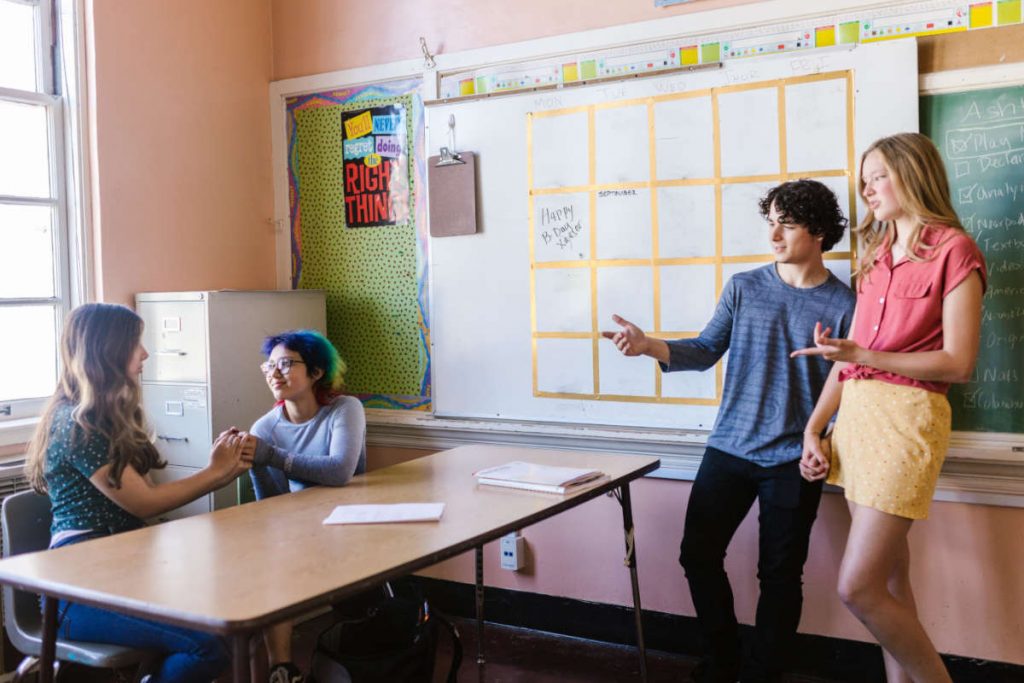Equity and Diversity in the Classroom

If there is one value the modern educator should celebrate, it is that classrooms today have become broader, richer, and more expansive. When people think about the forces currently transforming education, they likely think of the pace of knowledge production or the emergence of sophisticated new learning technologies. But in truth, there’s also a cultural shift happening in the field of education, and it has to do with people and social institutions. It is, of course, the broader movement for championing equity and diversity in the classroom.
But what exactly does it mean to cultivate equity and diversity in a classroom, and how must a teacher or coach practise these values? Take a deeper dive into these topics with the team behind Carrie Benedet Leadership Coaching.
What Are Equity and Diversity? Let’s Define These Two Key Terms
First, one must understand that although the terms “equity” and “diversity” are closely related—and although they appear together quite often—they do not mean the same thing and aren’t interchangeable. While diversity pertains to the quality of difference or variance, equity has to do with a commonly but individualised standards for demonstrating fairness and impartiality.
When using the term “diversity” in the workplace or in the classroom, it is usually associated with assessing variances in representation for race, nationality, ethnic background, gender, social class, religious group, and the like. A diverse environment is characterised by a variance in all of these differences, while homogenous environments tilt the representation in favour of just one or a select few of these groups.
“Equity” is used in various professional environments, for example, in the financial sector. But when paired closely with the term “diversity,” it pertains to achieving fairness and providing commensurate advantages to everyone to level the playing field.
Why do these two terms need to be studied and given careful attention? It’s for the simple fact that the playing field is never innately even and that people do not start with the same level of advantage by default. It’s important to realise that a person’s background may have historically dominated a particular field or had control of a particular environment. Such people are therefore better positioned to succeed than others because their beliefs, needs, or experiences are often prioritised more often than those of others.
To help envision what diversity and equity are supposed to achieve together, let’s use the banquet or feast metaphor. Diversity is about adding seats to the table and giving more than one type of social group a better chance to enjoy what is in front of them. Equity is about making sure that everyone is satisfied and that everyone has been able to nourish themselves according to their individual needs.
How Can Educators Lead Equitable, Diverse, and Inclusive Classrooms?
Let us bring equity and diversity into the context of the classroom. The same principle applies to many traditional standards for teaching and learning. Most learning concepts favour the social backgrounds, beliefs, or experiences of only one set of students—but at the risk of excluding others.
As an educator in the world today, you must acknowledge your responsibility to change things up and to have diverse and equitable classrooms. Your role is to oversee a diverse learning environment that can accommodate a wealth of sociocultural experiences – not just those of a chosen few.
You must also work towards equitable education for all your students, knowing that some may have to clear hurdles that are invisible to others. Whether the differences in your student academic performances can be due to language barriers, disabilities, or other factors, you must welcome the challenge to review their individual needs and adopt an inclusive educational pedagogy to all their situations.
It is by no means an easy task for teachers, guidance counsellors, school principals, and other professional educators. These same people have their own innate biases and assumptions to overcome—and this should be seen as normal and not a moral failing. To become true champions of these two values, educators must go through the very human process of unpacking their conscious and subconscious biases, stepping back from always being the “main character” in their narrative, and expanding their worldview of what meaningful educational practice constitutes.
The road towards more equitable and diverse educational experiences may initially be a little bumpy. But educators have ample opportunities to upskill and gain crucial support for navigating (and eventually leading) diverse, equitable, and inclusive classrooms.
Learn to Be a Champion of Equity and Diversity Through Carrie Benedet’s Leadership Coaching
One person that you can tap for in-depth training on equity and diversity is top educational leadership coach Carrie Benedet. Carrie’s rich experience in the field of professional coaching can help you envision your role in educational leadership for positive change, even as you handle complex topics like diversity and inclusive education.
‘Pay it forward’ to your present and future students by learning how to become a champion of a diverse and equitable classroom. Work with Carrie Benedet now!





